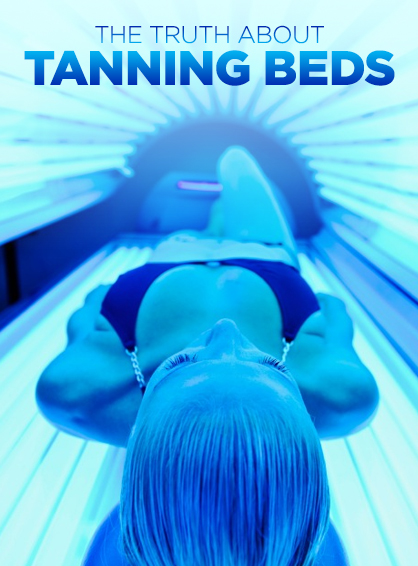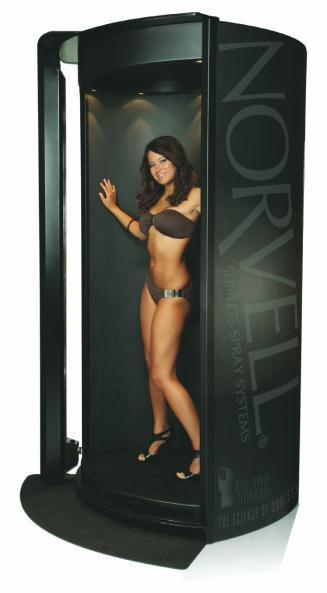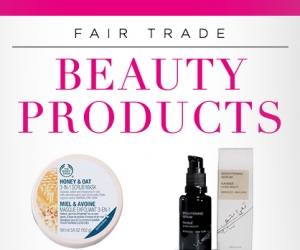The Dangers of Tanning Beds
Skin cancer rates are on the rise
Better think twice before you head to the tanning bed to get ready for the weekend. A new study from the Mayo Clinic shows that melanoma, the most deadly form of skin cancer, has increased dramatically among middle-aged adults in the last four decades and it’s being linked to tanning bed use. The study showed that from 1970 and 2009, for adults ages 40 to 60, skin cancer rates for men increased 4.5-fold, while it increased an even more alarming 24-fold for women.
A previous study showed that skin cancer among younger women, ages 18 to 39, increased 8-fold from 1970 to 2009. It only increased 4-fold for similarly aged men during the same time period. The increase is likely due to the UV radiation of tanning beds, according to researchers. And despite knowing the dangers, many women still use tanning beds.
To help better understand the risks, and the alternatives, LadyLUX conducted a roundtable interview to find out the facts about tanning beds. Those participating were Dr. Keith G. LeBlanc Jr., M.D., founder of The Skin Surgery Centre in Metairie, La.; Dr. Janet Prystowsky, M.D., a board-certified dermatologist in New York, N.Y.; and Dr. Purvisha Patel, M.D., owner and dermatologist at Advanced Dermatology & Skin Cancer Associates in Memphis, Tenn.


LadyLUX: What are the dangers of tanning beds?
Dr. LeBlanc: Well, tanning beds are a method of UV exposure, which we know is damaging to the DNA in our skin cells. This unprotected exposure causes premature aging and more importantly is known to be directly correlated with an increased incidence of skin cancers, notably basal cell carcinoma, squamous cell carcinoma, and melanoma.
Dr. Prystowsky: Tanning beds expose you to ultraviolet radiation which is a known carcinogen and increases your risk of skin cancer (melanoma and non-melanoma skin cancer, such as squamous cell carcinoma and basal cell carcinoma), premature skin aging, immune suppression, and eye damage including cataracts and ocular melanoma. Also, up to 58% of adolescent tanning bed users have been burned from frequent exposure to the tanning beds/lamps. There is also the risk of picking up bacterial, viral, and fungal skin infections from touching the bulbs/devices if they are not kept hygienic between patrons.
LadyLUX: Why do people still use them when they are known to be unsafe?
Dr. LeBlanc: This is a good question, but there is no good answer to this question as of yet. There has been a major push to expose the public to the dangers of indoor tanning devices. Notably, in the past three years, 10 states have passed legislation prohibiting indoor tanning for minors under 18 years old (Louisiana was the ninth state to pass such legislation). Unfortunately, there is also research stating that for people who tan regularly, the chemicals released in the body and brain during such activities are consistent with those released with activities such as smoking ... i.e., there may be an “addictive” component to tanning.
Dr. Prystowsky: Some people are “addicted” to tanning and cannot help themselves stay away from this dangerous practice, others are cosmetically driven by the perception that the tanned look is attractive, still others may look to get a base tan prior to a vacation where there will be intense exposure to protect themselves from burning (this does not work well), and finally there are yet others who may think of it as a way to raise their vitamin D levels (however, tanning parlor ultraviolet radiation is skewed away from the ultraviolet wavelength that optimally synthesizes vitamin D so it is not an efficient way to photosynthesize vitamin D in your skin).
LadyLUX: What makes tanning beds so dangerous?
Dr. Prystowsky: To quote the American Academy of Dermatology, “Using indoor tanning beds can raise your risk of melanoma, the deadliest form of skin cancer by 59% and the risk increases with each use. ... Melanoma is increasing faster in young women (15-29 years old) than in young men of the same age, and nearly 70% of tanning salon patrons are Caucasian girls and young women.”
Dr. Patel: The United States Department of Health and Human Services and the World Health Organization's (WHO) International Agency of Research on Cancer panel has declared ultraviolet UV radiation from the sun and artificial sources, such as tanning beds and sun lamps, as known carcinogens (cancer-causing substances). This puts tanning beds in the same carcinogenic causing category as cigarettes and uranium After just one tanning bed use, you increase your risk of squamous cell skin cancer by 69%, basal cell skin cancer by 26% and melanoma by 20%. These risks increase by an additional 2% each time you use a tanning bed.

LadyLUX: Are tanning beds as dangerous as tanning in the sun?
Dr. LeBlanc: The short answer is yes. The more detailed answer is that it is dependent upon which type of lamp is used for the tanning bed. For example, some tanning beds use lamps that emit strictly UVA light. While the effects of UVA have not been linked to skin cancers for as long as UVB rays have been, these rays have nevertheless been proven carcinogenic (cancer-causing) as well as linked to premature aging.
Dr. Prystowsky: Both tanning beds and natural sun exposure are dangerous because they expose you to ultraviolet A and ultraviolet B rays which damage DNA in skin cells. Tanning beds emit an unbalanced artificial spectrum of ultraviolet radiation that is more concentrated on rays (ultraviolet A) that penetrate deeply into the skin. While sunburning is minimized with this spectrum when compared with natural sun exposure, we have learned that these deeply penetrating rays are carcinogenic when intensely delivered in tanning salons. Exposure to the sun is risky also but is part of everyday living and one can take measures to be protective, e.g. wearing sunblock and protective clothing, seeking shade, and going outside at times when the sunshine is less strong. Visiting a tanning salon is a completely optional experience and should be eliminated from one's routine.
LadyLUX: Is there a safe amount of tanning bed use?
Dr. LeBlanc: No. Again any UV exposure is harmful to the DNA within our skin cells and can therefore lead to the harmful effects of skin cancer and premature aging as discussed. Some would advocate UV exposure for the sake of Vitamin D, but there is much literature available supporting the notion that adequate Vitamin D levels can be achieved safely with food and dietary supplements.
Dr. Patel: There’s no such thing as a safe tanning bed or a safe amount of time to be in a tanning bed, not even to get a “base tan.” In fact, the idea of a “base tan” is a myth. Any change to your skin color – a tan or a burn – means that the skin has been damaged.

LadyLUX: What are the alternatives to tanning beds if someone wants to give their skin a glow?
Dr. LeBlanc: Alternatives include spray on tans, moisturizing lotions which give the appearance of a tan, and “tan towels”. All of these are various iterations of the same concept - application of a chemical onto the surface of the skin which oxidizes and gives the appearance of a tan. Most commonly, this chemical is dihydroxyacetone. This chemical does itself lend a small degree of UV protection (SPF 2-3), but is alone not nearly the amount of UV protection recommended by the American Academy of Dermatology.
Dr. Prystowsky: Self tanners are a way to cosmetically mask the pasty white look of someone who avoids the sun. They have been fairly widely used since the FDA approved DHA for this use in the 1970's in creams and lotions applied to the skin. They are safest when used in creams and lotions that are applied to the skin because the chemical, dihidroxyacetone (DHA), mostly gets into the outer dead skin cell layer (about 10% appears to end up in the living skin cells) and is not inhaled or ingested as may occur with spray tans. Spray tans are prone to allowing the chemical to get into the airway (including the nose and mouth).
LadyLUX: Are spray-on tans safe?
Dr. LeBlanc: Yes, so long as inhalation of the vehicle in which the DHA is applied is not an issue. It is important to recall, however, that this spray on tan is not an adequate degree of UV protection (ie, that sunscreen will be needed in addition to afford an appropriate level of protection).
Dr. Prystowsky: They are thought to be safer than a sun induced tan when applied using precautions that limit their application to only the skin but not when the chemical gets into the mouth, airway, eyes, or inside the nose. Spray tans are prone to allowing the chemical DHA to get into the airway (including the nose and mouth) and eyes unless special protections are taken. In a sampling of 12 salons reported by ABC News, eye covers and nose plugs were usually not in stock and almost none had protective gear for the mouth. Of those salons with protective gear in stock, patrons were discouraged from using it. DHA has the potential to cause genetic alterations and DNA damage in living cells according to recent studies. Increased contact with living cells occurs when the product is inhaled or ingested. It appears that more studies are needed to be done to determine if serious health concerns exist with spray tans. Meanwhile, I recommend sticking to creams or lotion applications of DHA. If you feel you just have to do the spray tan, then make certain you protect your eyes, nostrils, and mouth and do not inhale it!
LadyLUX: Is more education needed on the subject?
Dr. Prystowsky: As long the devices exist for non-medical use and otherwise healthy people are using them, more education and continuing education is needed. Just like we all know smoking cigarettes is bad, they are still legally sold so education is necessary to prevent people from starting to smoke and for current smokers to be encouraged to quit.


